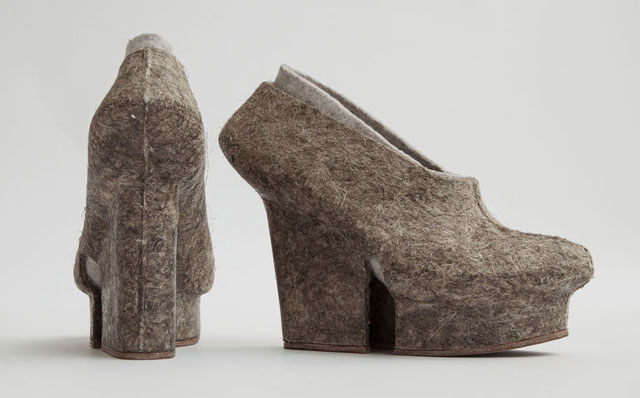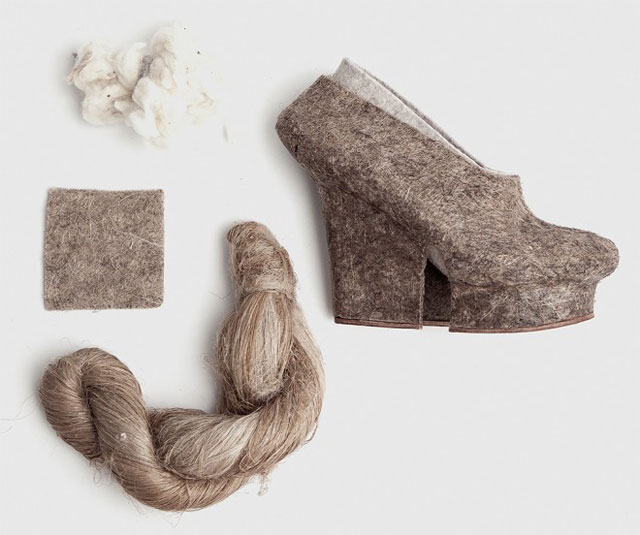To some, 3D printing resembles an organic process, with an object growing onto a build platform the way a seed might burst forth from the ground and develop into a tree. It was this organic growth, combined with ideas of synthetic biology, that inspired Liz Ciokajilo, an MA student at the London College of Fashion, to develop a line of natural fibre shoes called Natural Selection. Liz’s approach is somewhat different to other footwear designers experimenting with 3D printing.
With a focus on natural fibres, the material capabilities of 3D printing haven’t advanced quite far enough and she wasn’t able to culture shoes from a petri dish, but, Ciokajilo was able to craft a variety of shoes that hint in that direction. At the current stage, she felt that 3D printing was limited to synthetic material and so, chose not to print the shoes themselves, saying, “I recognize all the potential benefits of 3D printing and loved the singular elegance of the forms as objects. But I kept thinking of sweaty feet encased in synthetic, nylon type materials.” Instead, she used AM to create a mould suitable to shape her ultimate designs.
Ciokajilo filled her 3D-printed moulds with natural compounds, made up of combinations of things like flax, coconut fibre, and wool fused together with resin, in order to form a soft and sustainable shoe made of two parts. The heel, which is stiff and structural, is also hollow, making it lightweight. Inside of the shoe is a felt sock, that can be detached from the shoe body to make for casual footwear.
The list of printable materials is growing all of the time and, with some more developments from Emerging Objects or Kai Parthy, the inventor of the LAYWOO-D3 wood filament, I wouldn’t be surprised if we see more natural fibre filaments suitable for organic shoemaking. But anyone who thinks that 3D printing is more organic than traditional manufacturing, must not forget that life is equal parts creation and demolition. The method of production more likely to put a smile on the face of Shiva, the god of birth and destruction, however, might be something more along the lines of milling, as nothing more resembles the true nature of existence than conception through annihilation.
Source: Wired





